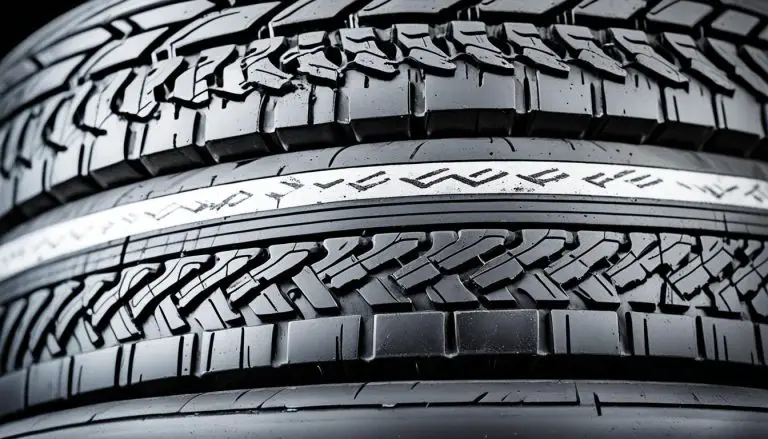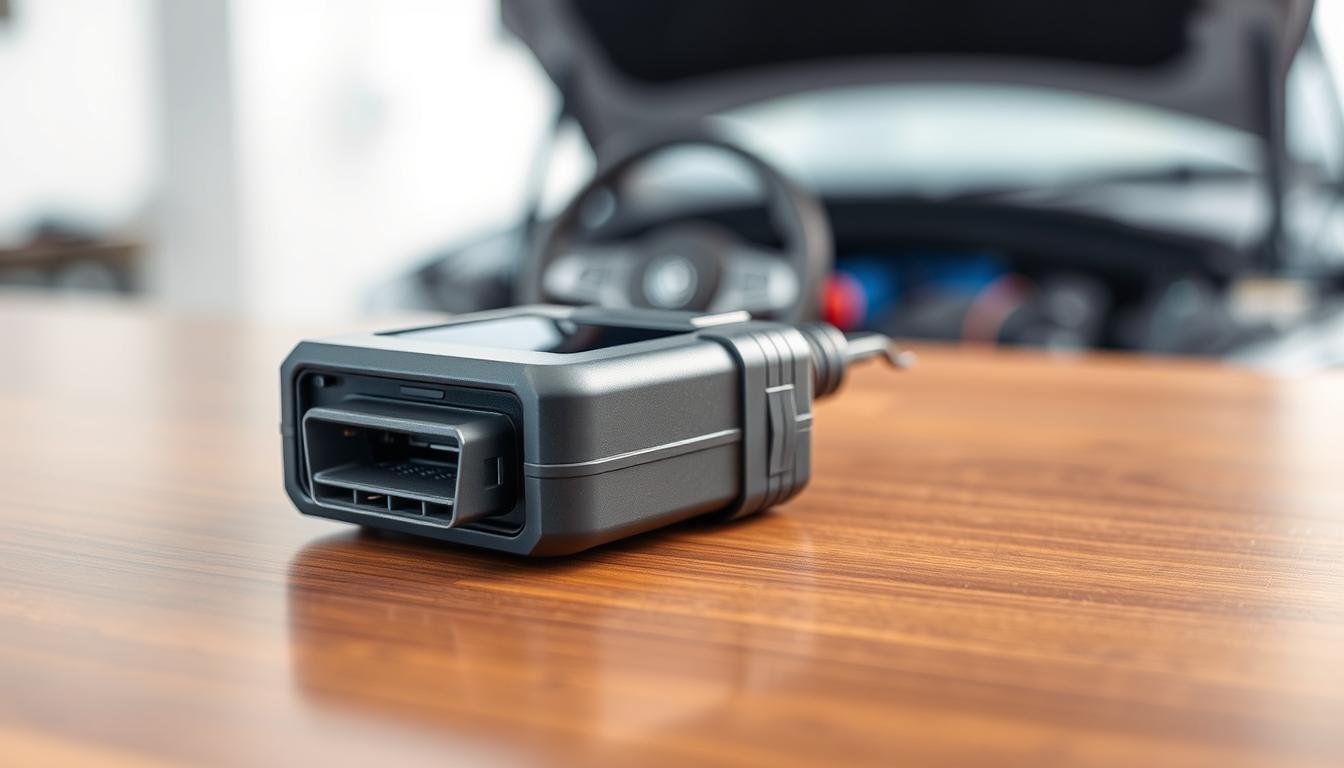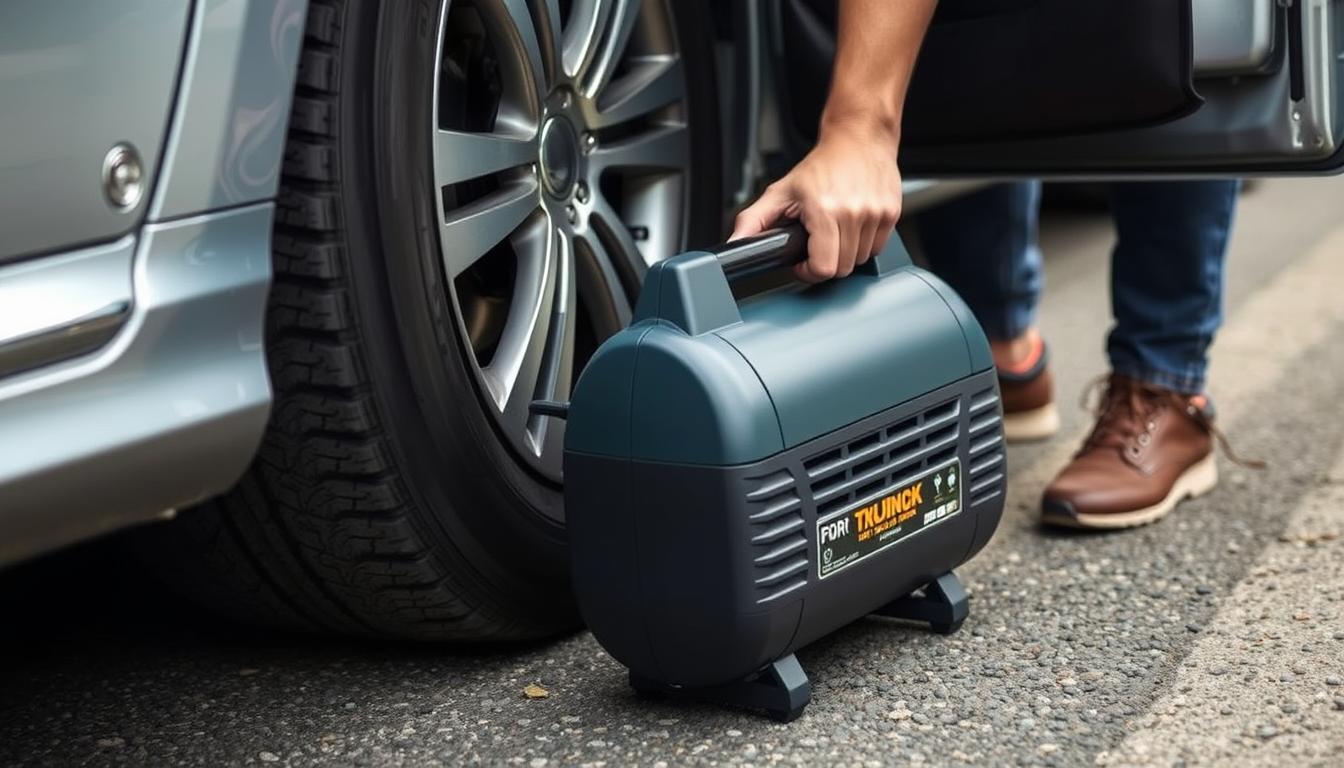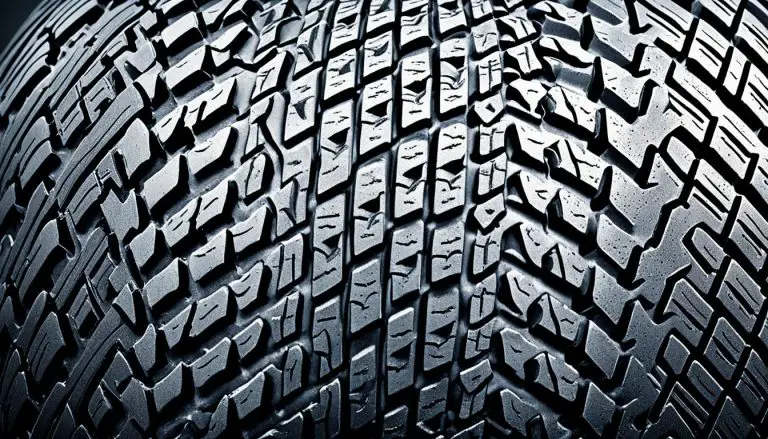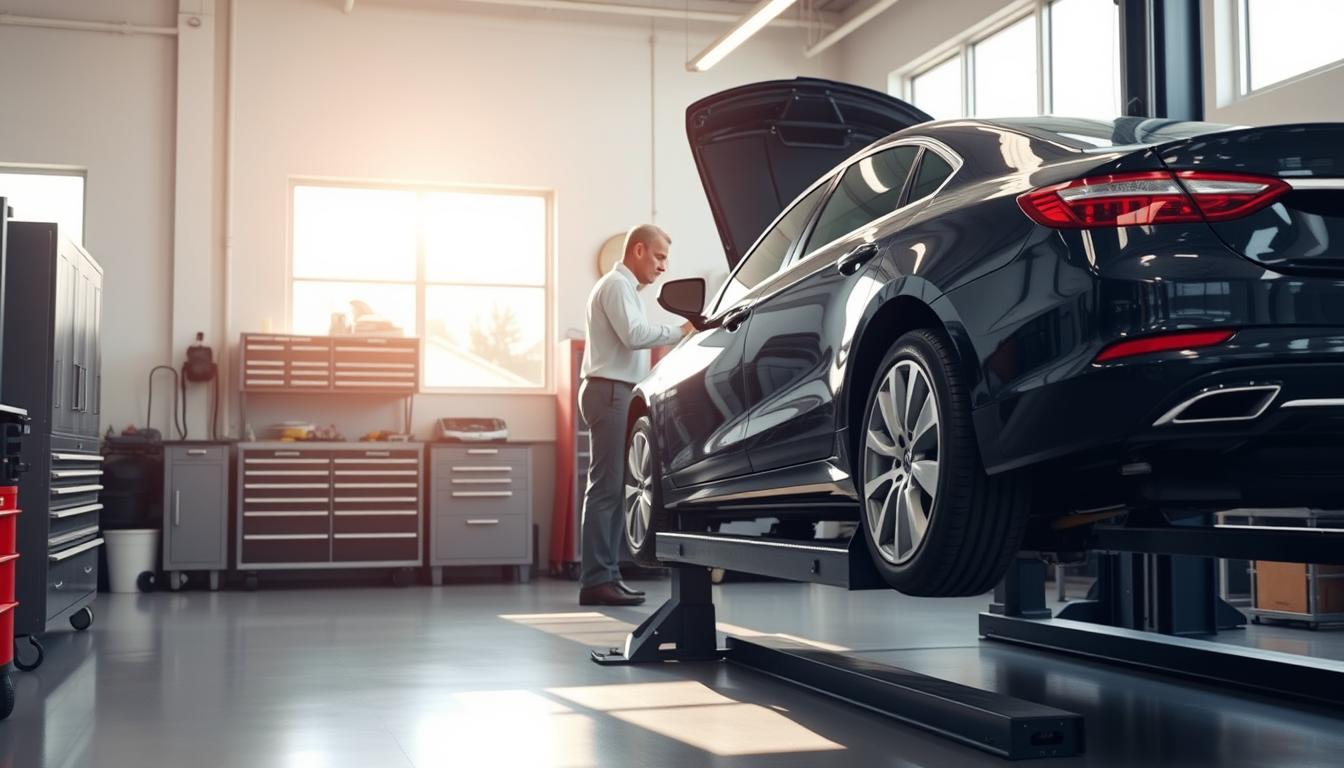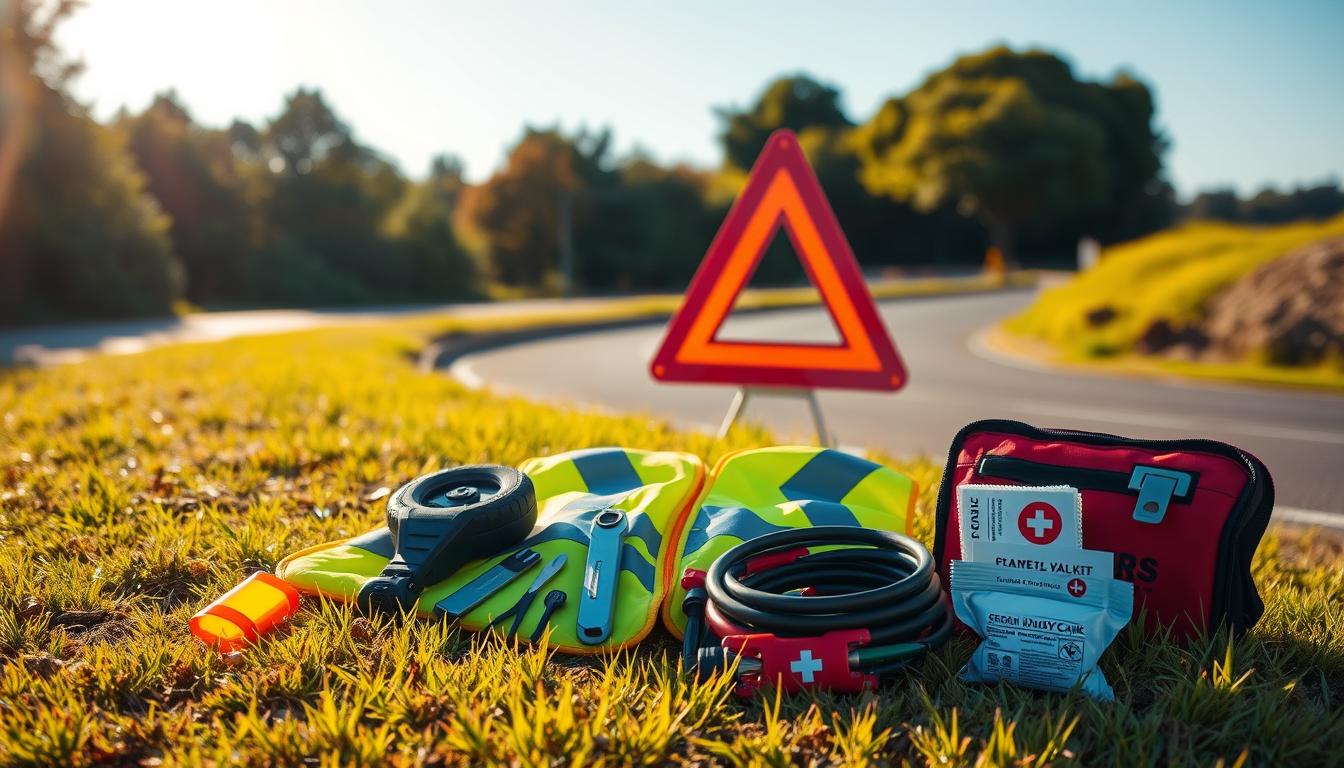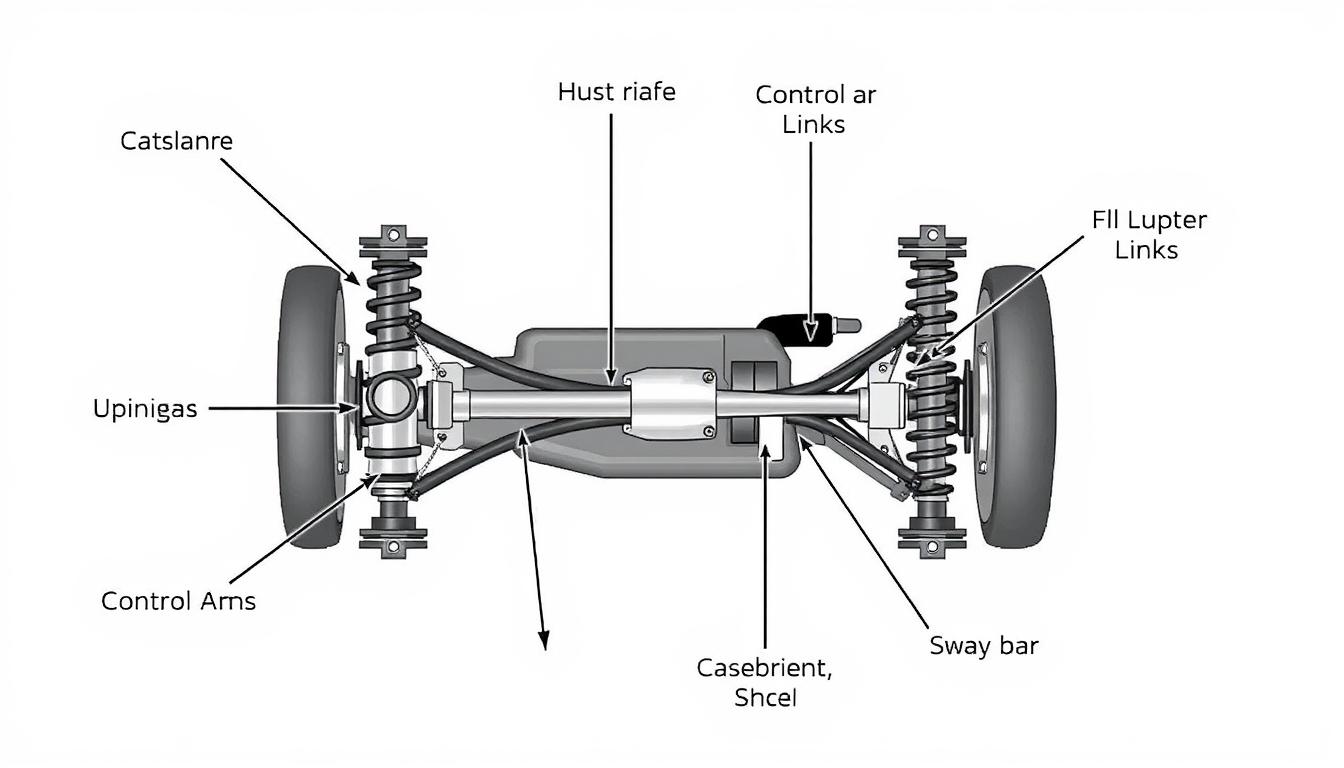
Your car’s suspension system plays a crucial role in providing a smooth ride and keeping your vehicle stable on the road. When functioning properly, you barely notice it’s there. But when suspension problems develop, they can affect your comfort, handling, and most importantly, your safety. Early detection of suspension issues can save you from costly repairs and potential accidents.
This comprehensive guide will help you identify common car suspension problems through their symptoms, understand what’s causing those unusual noises, and provide practical troubleshooting steps to determine when it’s time to seek professional help.
Common Symptoms & Noises of Suspension Problems
Recognizing the warning signs of car suspension problems is the first step toward addressing them. Your vehicle will typically communicate issues through both physical symptoms and distinctive noises.
Unusual Noises That Signal Trouble
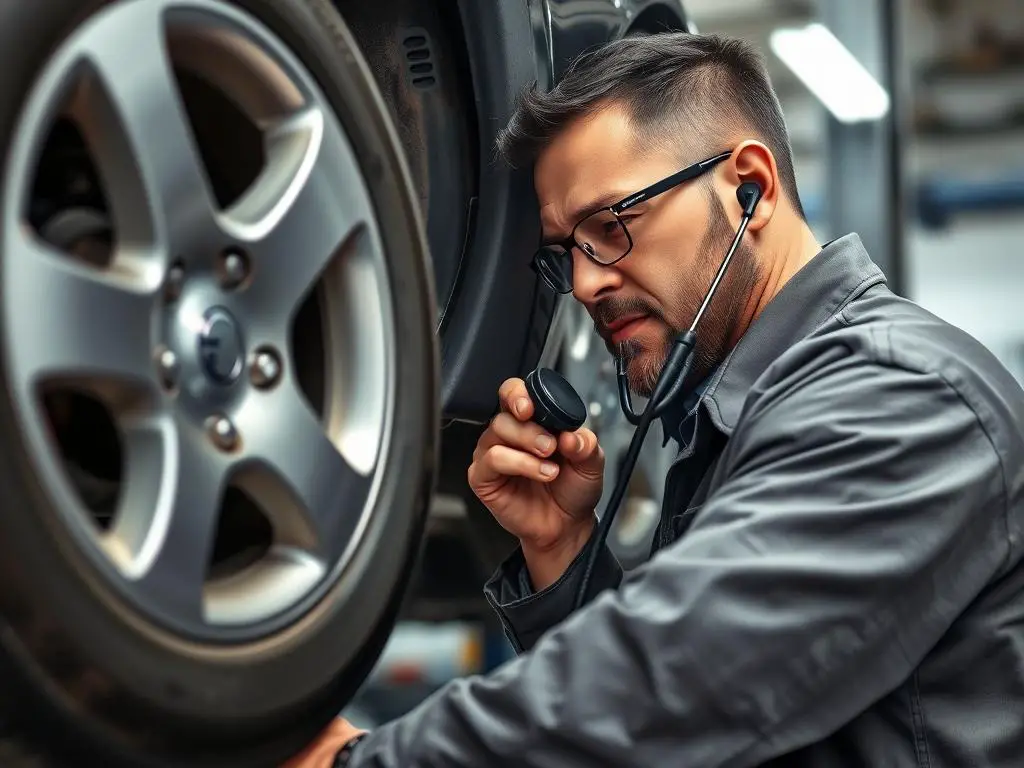
If your vehicle is making strange sounds, especially when driving over bumps or making turns, your suspension may be trying to tell you something:
- Knocking or clunking sounds: Often indicates worn ball joints, control arm bushings, or loose stabilizer links
- Squeaking or squealing: Typically points to dry bushings, joints, or sway bar links noise
- Grinding noises: May suggest damaged bearings or severely worn components
- Popping sounds during turns: Common with bad tie rod end symptoms or worn CV joints
- Rattling over bumps: Often related to loose components or damaged shock absorbers
Did you know? The specific location of a noise can help pinpoint the problem. Front suspension noises are often more noticeable during braking, while rear suspension issues typically make themselves known when accelerating or driving over bumps.
Physical Symptoms You Can Feel and See
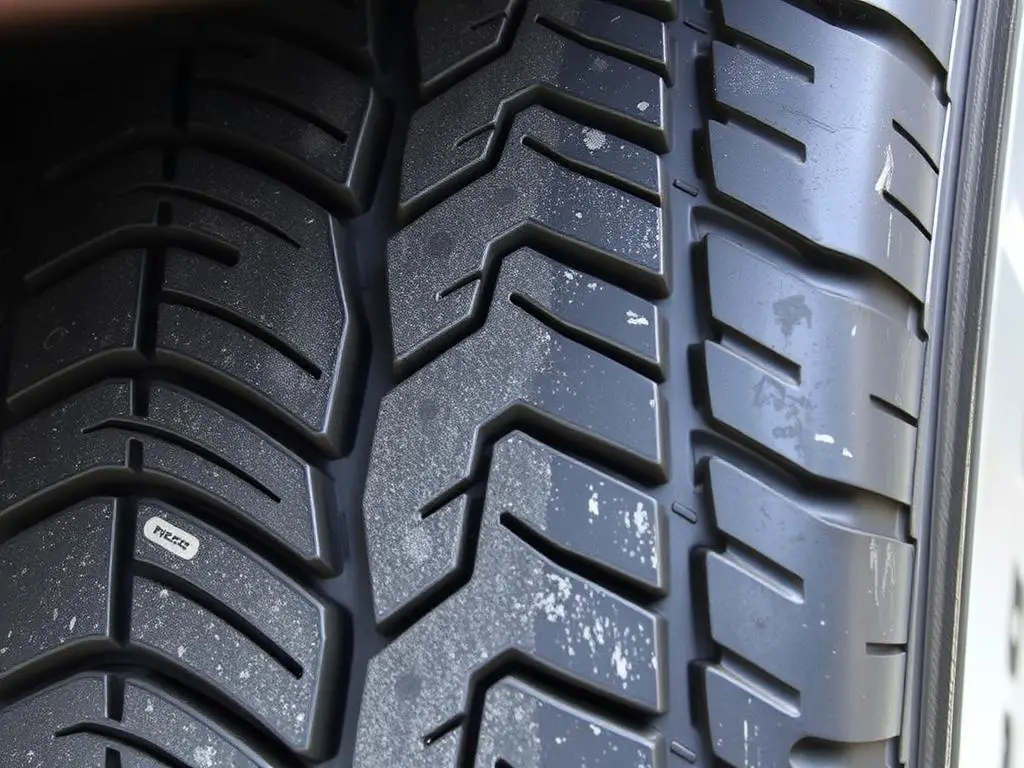
Beyond noises, your vehicle will display physical symptoms when the suspension system is compromised:
- Vehicle pulling to one side: Indicates alignment issues or uneven suspension component wear
- Excessive bouncing after bumps: A sign of worn struts bad symptoms or shock absorbers
- Nose diving when braking: Suggests weakened front suspension components
- Uneven tire wear: Often results from improper alignment due to suspension issues
- Vehicle sitting lower on one corner: May indicate a broken spring or leaking front strut
- Difficulty steering: Could be related to tie rod ends, ball joints, or power steering issues
- Excessive body roll when cornering: Suggests worn anti roll bar links symptoms or deteriorated stabilizers
Key Suspension Components & Common Failures
Understanding which parts of your suspension system are failing can help you communicate effectively with your mechanic and make informed decisions about repairs.
Leaking Front Struts
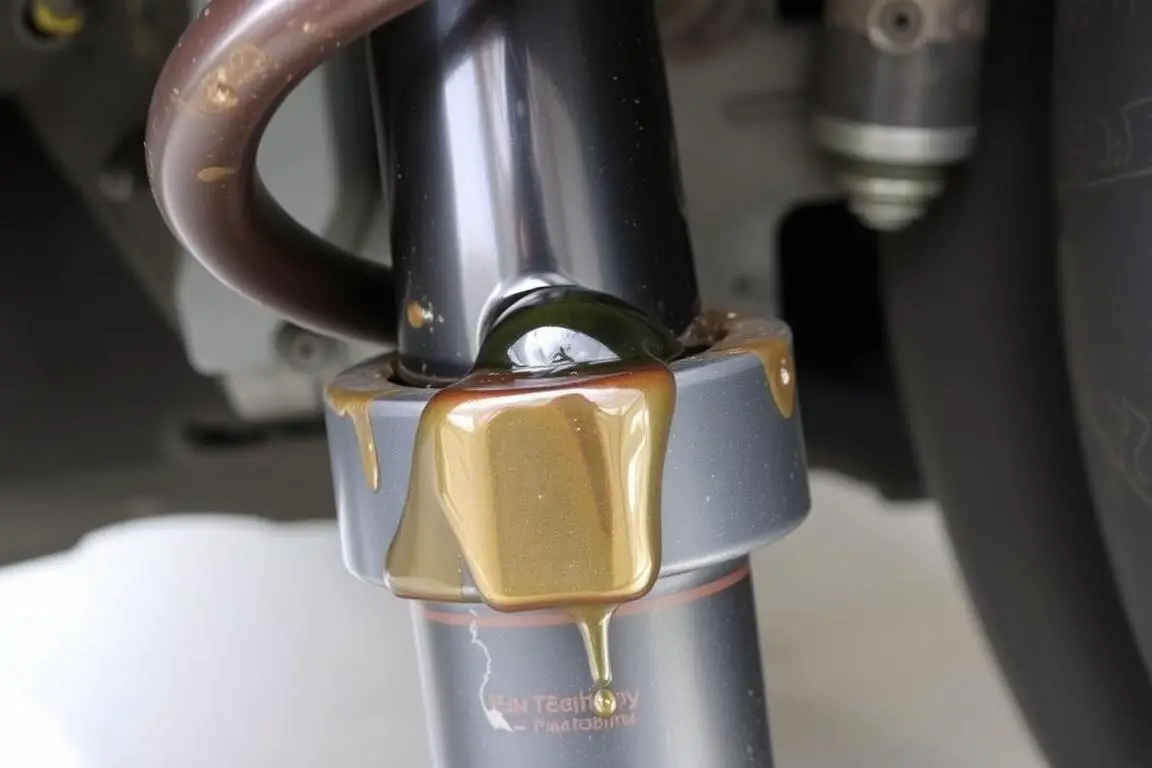
Struts combine a shock absorber and structural support into one unit. When a leaking front strut develops, you’ll notice:
- Oil or fluid on the outside of the strut body
- Decreased ride height on the affected corner
- Excessive bouncing and poor ride quality
- Increased stopping distance and nose-diving when braking
A leaking strut should be replaced promptly, as it cannot properly dampen road impacts and puts additional stress on other suspension components.
Worn Anti-Roll Bar Links
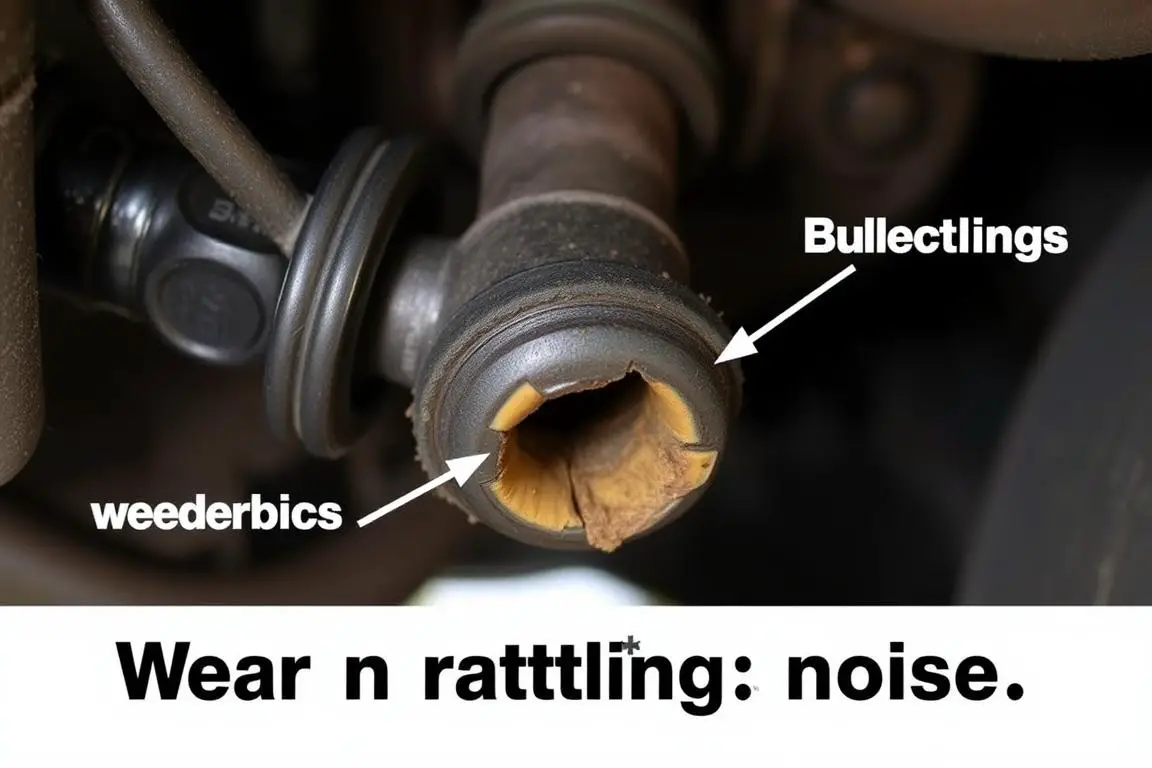
Anti-roll bars (also called sway bars or stabilizer bars) help reduce body roll during cornering. The links that connect these bars to the suspension can wear out, leading to:
- Rattling or knocking noises when driving over uneven surfaces
- Increased body lean during turns
- Unstable handling, especially in crosswinds or during lane changes
- Distinctive stabilizer bar link noise that increases with speed
Failing Tie Rod Ends
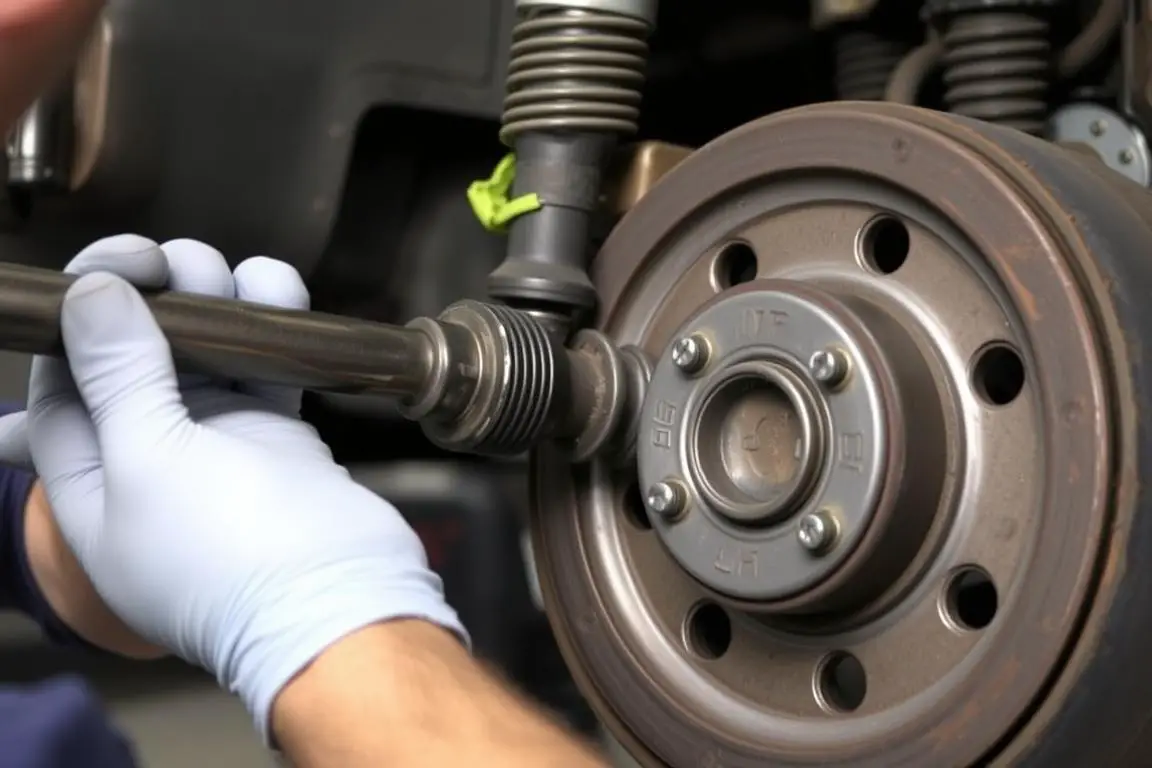
Tie rod ends connect your steering system to the wheels. When they begin to fail, you’ll experience:
- Wandering or inconsistent steering
- Uneven or rapid tire wear on the inner or outer edges
- Clunking or popping noises when turning
- Steering wheel vibration or looseness
Recognizing bad tie rod end symptoms early is crucial, as complete failure can cause loss of steering control.
| Suspension Component | Common Symptoms | Typical Lifespan | Average Repair Cost |
| Shock Absorbers | Excessive bouncing, poor handling | 50,000-100,000 miles | $200-$400 per pair |
| Struts | Leaking fluid, nose diving when braking | 50,000-100,000 miles | $400-$800 per pair |
| Control Arms | Clunking noises, uneven tire wear | 90,000-100,000 miles | $250-$400 per arm |
| Ball Joints | Clunking, wandering steering | 70,000-150,000 miles | $200-$400 per joint |
| Sway Bar Links | Rattling over bumps, excessive body roll | 50,000-100,000 miles | $100-$250 per pair |
| Tie Rod Ends | Steering play, uneven tire wear | 70,000-100,000 miles | $150-$300 per side |
Suspension Troubleshooting Guide
While complex suspension system problems require professional diagnosis, there are several checks you can perform to help identify issues before taking your vehicle to a mechanic.
Visual Inspection Tips
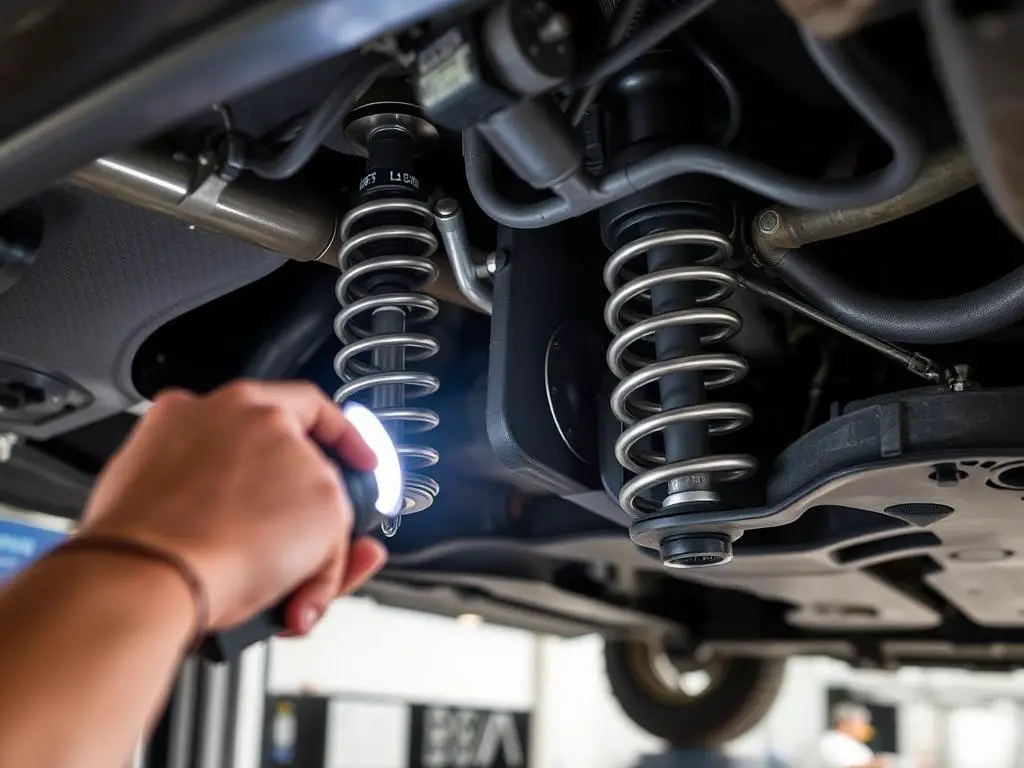
A thorough visual inspection can reveal many suspension problems:
- Park on level ground and check if the vehicle is sitting evenly on all four corners
- Look for leaking fluid on struts or shock absorbers, which indicates seal failure
- Inspect rubber bushings for cracks, splits, or deterioration
- Check for rust or damage on springs and structural components
- Examine tire wear patterns—uneven wear often indicates suspension issues
Safety First: Always ensure your vehicle is safely supported before crawling underneath for inspection. Use proper jack stands and never rely solely on a jack to support the vehicle’s weight.
DIY Tests for Suspension Issues
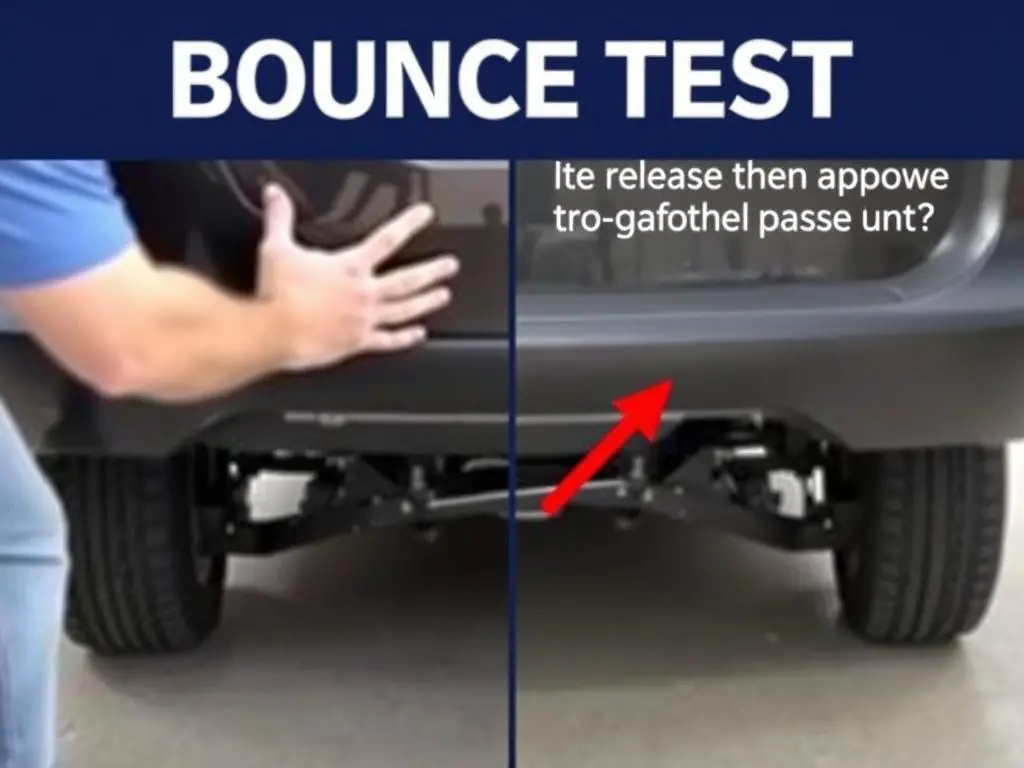
These simple tests can help confirm suspension troubleshooting findings:
The Bounce Test
This classic test checks your shock absorbers and struts:
- Push down firmly on each corner of the vehicle and release
- Count how many times the vehicle bounces
- Properly functioning suspension should settle after 1-2 bounces
- If it bounces more than three times, your shocks or struts likely need replacement
The Rocking Test
This helps identify loose components:
- With the vehicle safely supported, grasp the top of the tire
- Try to rock the wheel in and out (not up and down)
- Excessive movement may indicate worn tie rods, ball joints, or wheel bearings
- Have a helper turn the steering wheel slightly while you watch for movement in suspension components
When to Seek Professional Help
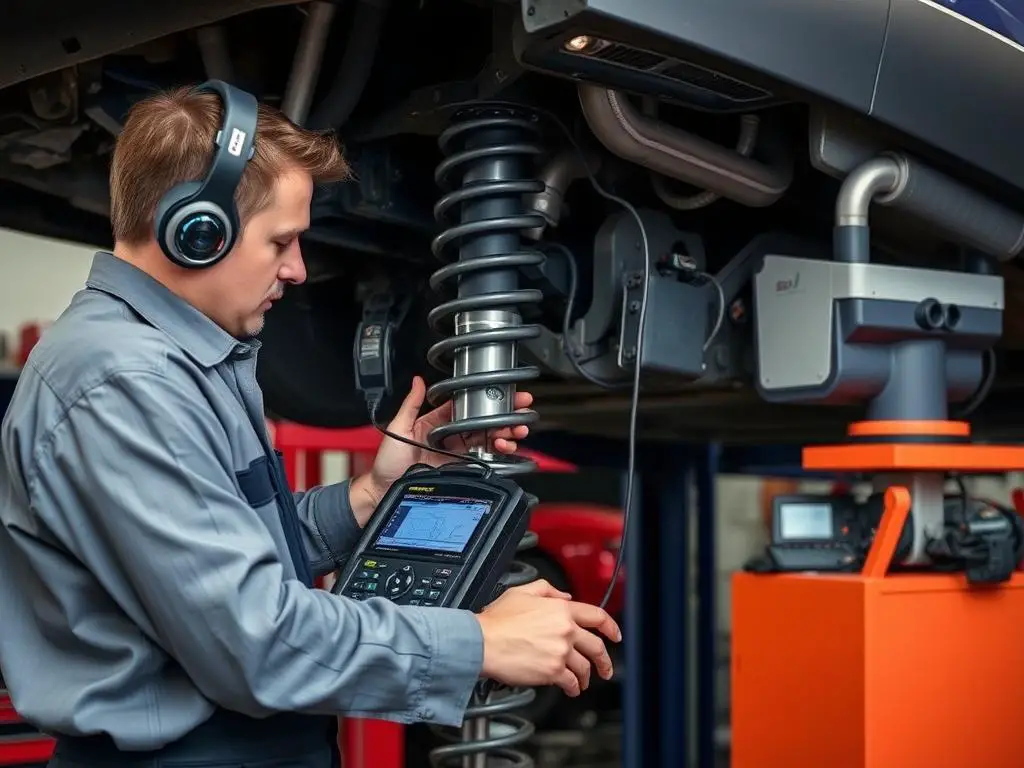
While DIY inspection is valuable, certain situations warrant professional attention:
- Any suspension noise that persists or worsens
- Visible fluid leaks from shocks or struts
- Vehicle pulling strongly to one side while driving
- Excessive bouncing that doesn’t improve
- Uneven tire wear despite proper inflation
- After hitting a major pothole or curb
- When your vehicle has been in an accident
Is Your Car’s Suspension Giving You Trouble?
Don’t ignore those warning signs. Professional suspension inspection can prevent costly repairs and ensure your safety on the road. Our certified technicians use specialized equipment to diagnose and fix suspension problems correctly the first time.
Frequently Asked Questions About Car Suspension Problems
What noise does a bad stabilizer bar make?
A bad stabilizer bar (sway bar) typically makes a rattling, knocking, or clunking noise when driving over bumps or uneven surfaces. This noise is most noticeable at lower speeds and when turning. The sound comes from worn stabilizer bar links or bushings that allow excessive movement, causing metal-on-metal contact.
How do I know if my struts are bad?
Common struts bad symptoms include excessive bouncing after bumps, nose-diving when braking, uneven tire wear, fluid leaks on the strut body, and a rougher than normal ride. Your vehicle may also drift during turns or feel unstable at highway speeds. Performing the bounce test (pushing down on your vehicle’s corner and releasing) can help confirm—if it bounces more than 2-3 times, your struts likely need attention.
Can I drive with suspension problems?
While you might be able to drive with minor suspension issues, it’s generally not recommended. Compromised suspension affects handling, braking distance, and overall vehicle control—all critical safety factors. Some suspension problems, like a broken spring or tie rod end, can lead to complete loss of control if they fail completely. The severity determines how urgent repairs are, but addressing suspension issues promptly is always the safest approach.
How much does it cost to fix suspension problems?
Suspension repair costs vary widely depending on the specific components needing replacement and your vehicle make and model. Basic repairs like replacing sway bar links might cost 0-250, while more complex jobs like strut replacement can range from 0-800 per pair. Complete suspension overhauls on luxury vehicles can exceed ,000. Getting multiple quotes from reputable shops is recommended, as prices can vary significantly.
What causes most suspension problems?
The primary causes of car suspension problems include normal wear and tear from regular driving, impact damage from potholes or curbs, poor road conditions, overloading the vehicle beyond weight capacity, and lack of maintenance. Environmental factors like road salt, moisture, and extreme temperatures can accelerate deterioration of suspension components by promoting rust and degrading rubber bushings.
Maintaining Your Car’s Suspension System
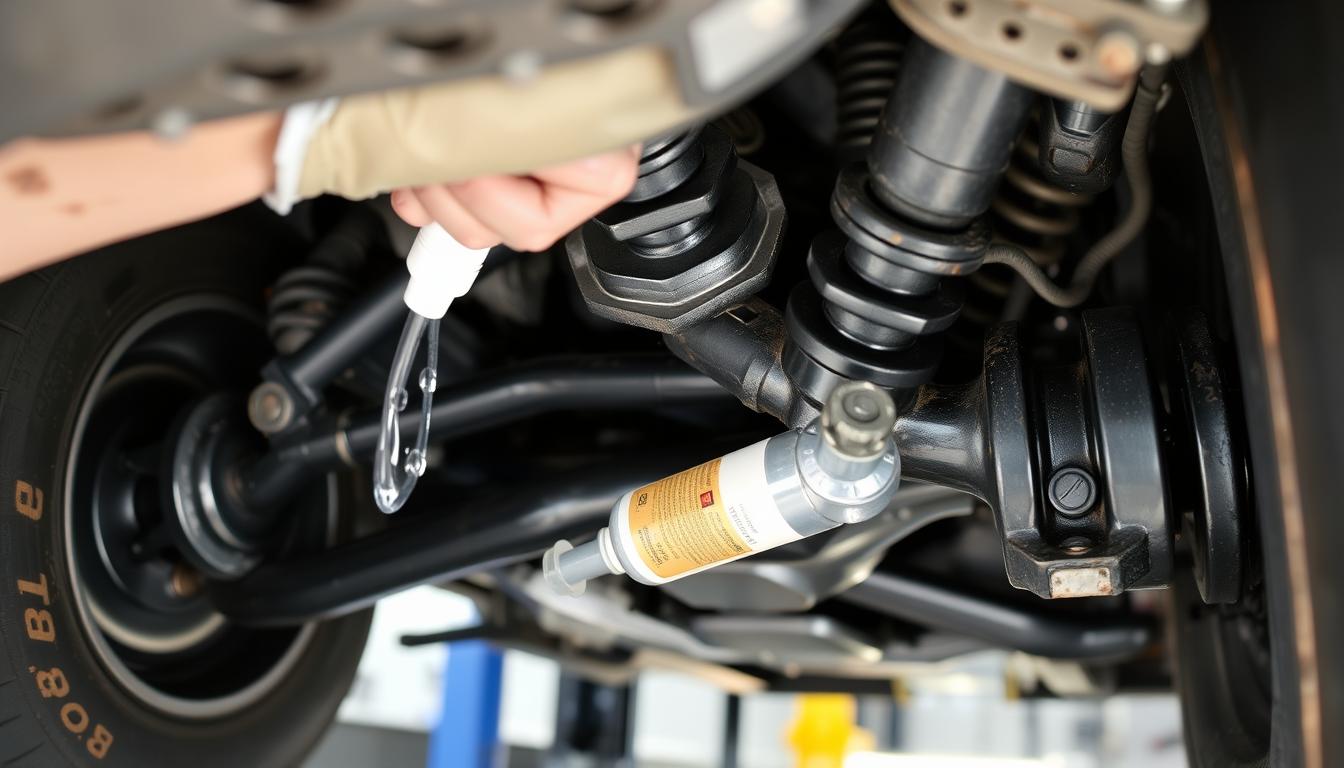
Your vehicle’s suspension system is crucial for both comfort and safety. By staying alert to the warning signs of suspension problems and addressing them promptly, you can avoid more extensive damage and costly repairs down the road.
Regular maintenance checks, including having your suspension inspected during routine service appointments, can help catch issues before they become serious. Remember that many suspension components work together as a system—a problem with one part often leads to accelerated wear on others.
If you’ve noticed any of the symptoms or noises described in this guide, consider having your vehicle inspected by a qualified mechanic who specializes in suspension systems. The investment in proper diagnosis and repair will pay dividends in improved handling, safety, and overall driving experience.
Keep Your Ride Smooth and Safe
Don’t let suspension problems compromise your vehicle’s performance and your safety. Our ASE-certified technicians can diagnose and repair all types of suspension issues using quality parts and equipment.
